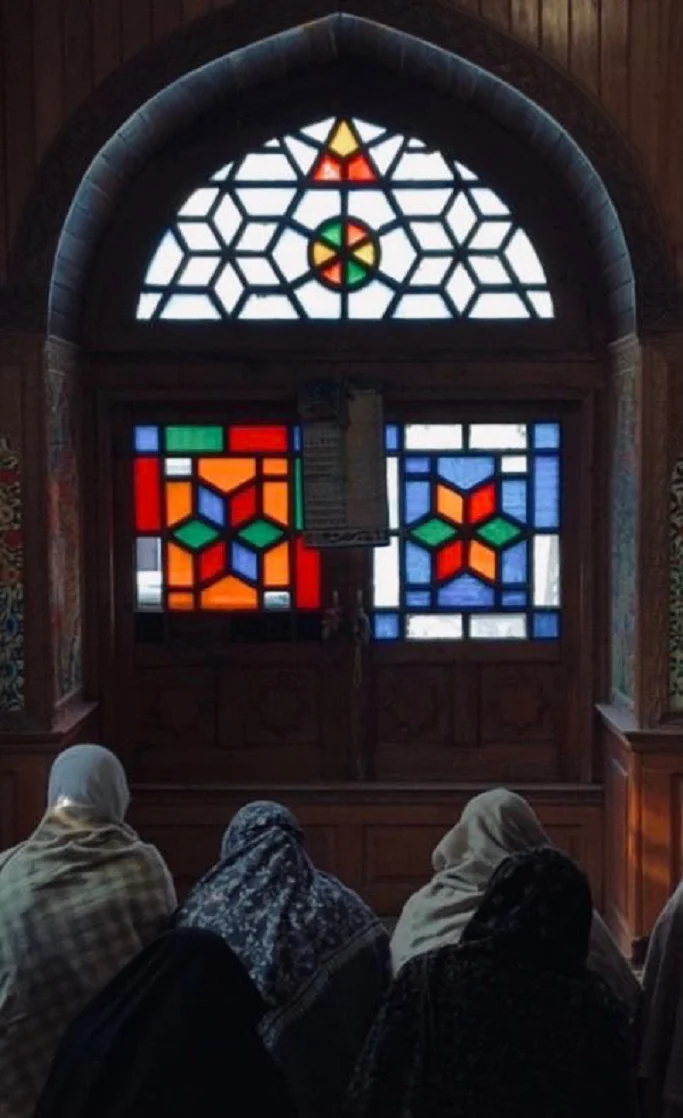
By M Miftah
TODAY’S is an age of images and Kashmir has been participating in the culture of quick-clicks as well. The valley has controversially been a favourite of foreign frames. This trend has now found new participants from among Visual and brand story telling of Kashmir by Kashmiris
Coming from Downtown Srinagar, sacred spaces like Dargahs, Khanqahs, Imambaras, local temples, gurdwaras and Astaans serve as not just places of worship for us an active space in the public sphere where one engages with our environs and circumstances in terms of social, political, religious and the cultural. Primarily, these are intimate spaces for healing in the context of our fractured past and turbulent present. When these sacred healing places are invaded in the name of art, storytelling by woke and socially conscious ‘Kashmir-centric brands and picturisation of a ‘Happy Valley’ fallacy, we display a systemic conscious callousness towards our own indigenous spaces that hold reverence for large sections of our brethren. We ‘other’ our own familiar spaces by approaching them with the lens of strange, faraway and unfamiliar.
Are we becoming perpetrators of the outsider gaze? The imagination of ‘Kashmir’ and sacred spaces, being deliberately chosen, placed and framed by the photographer and brands in a manner that divorces them from their historical, religious, social and cultural context creates her rather than savour and respect her.
Recently, a whirlwind of politics, hate and criticism revolved around the recent photoshoot of a model in the courtyard of Gurudwara Sahib Kartarpur, Pakistan. It is relevant as it raises a very relevant question of sensitivity, sacredness and the ‘gaze’. Are we being too judgemental? What is so problematic? It’s just a photograph? Isn’t it a positive connotation, spreading awareness, increasing visitation?
Just a small sample of the flood of questions being raised and coming to our mind, isn’t it ! The primary concern remains exoticisation and the ‘way we view or engage’ with a space. Reducing a highly sacred space for the believers to an aesthetic prop for the brand‘ storytelling’ and content for social media feeds, is problematic. It is just the legacy of the Orientalist Gaze, we are propounding and manifesting in our local spaces, without the desire to engage and create a mutual dialogue of interest.
Similarly, re-visualising a couple relaxing against the juxtaposition of a revered graveyard, doing campaign shots in the inner sanctum of the women’s section of Khankah Maula, using persons from socially underprivileged sections as backdrop for a ‘bright heavily embellished traditional outfit’ and staging shots of veiled women in public spaces, is reimagining spaces and people without an ounce of respect and ignorance of the stake in the community they are photographing. Doesn’t this amount to violation of intimate spaces and undermining the dignity of the believers and subjects as we caricature them to suit our commercial and artistic interests?
Retellings and reimaginings of the same accounts, stories and circumstances under a more glossy, glittery and fashionable name sells rather than the authentic, true and blatant accounts which remain hidden away in the attics of the booksellers.
An image of the ‘East’ and Kashmir in particular has long existed in the Western and South Asian imagination through literature,art, cinema and photographs. A reinforcement of the existing stereotypes through visual storytelling, literature and business interests, is a representation of the values and ideals of the narrator, indicative of an inherent bias and detachment in their work.The socio-cultural identity and background of the narrator, whether consciously or subconsciously, inevitably helps shape his or her telling of the story and which parts they will blot out from ‘public memory’ forever.
Sharbat Bibi, who has recently been granted asylum in Italy is yet another case in point. How does Steve McCurry’s photograph of Sharbat Gula, the ‘Afghan Girl’ in 1984 come across as problematic and oppressive? She is forced to unveil her face in front of a stranger, the photographer, so that he can capture the haunting image of her to be splashed across the world stage for close to five decades, under a different story, one that suits McCurry’s interest, rather than her own of fear and discomfort to being exposed to a stranger. He continued to earn millions from the photograph till recently when he was pressured to share some portion of the proceeds with Sharbat Bibi. In an age, where our local talented visual storytellers are openly using the template of Steve McCurry as inspiration, are we headed to an idea of an exotic, unrealistic, phantom known as Kashmir.
It is time we question our idea of aesthetic perfection over the realities of the places we represent in our work. In a world of increasingly interwoven networks, myriad audiences and increased public exposure, we must attest to our responsibilities as a brand, a photographer, a content creator, a filmmaker or a storyteller.
Views expressed in the article are the author’s own and do not necessarily represent the editorial stance of Kashmir Observer
- The author is a flaneur based in Kashmir
Follow this link to join our WhatsApp group: Join Now
Be Part of Quality Journalism |
Quality journalism takes a lot of time, money and hard work to produce and despite all the hardships we still do it. Our reporters and editors are working overtime in Kashmir and beyond to cover what you care about, break big stories, and expose injustices that can change lives. Today more people are reading Kashmir Observer than ever, but only a handful are paying while advertising revenues are falling fast. |
| ACT NOW |
| MONTHLY | Rs 100 | |
| YEARLY | Rs 1000 | |
| LIFETIME | Rs 10000 | |











